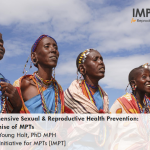Future Scenarios of Adolescent Contraceptive Use, Cost and Impact in Developing Regions
Posted by Share-Net NL on September 6, 2018 at 8:18 am

KEY POINTS
- This report presents scenarios of adolescent contraceptive use through 2030 to highlight the potential impact and costs associated with overall increased contraceptive use among adolescents and an increased use of long-acting, reversible contraceptives (LARCs), specifically.
- Under a scenario that assumes the most likely level of modern contraceptive use to be reached in a particular year (median values of probabilistic projections), the number of adolescent women using modern contraceptives in developing regions would reach 19.8 million in 2030, and 57% of adolescent women would have their need for modern contraception met.
- The total annual cost of services in 2030 for the projected 19.8 million modern method users would be an estimated $310 million. The cost would be lower, at $275 million, if 20% of adolescent women using short-acting methods were to choose LARCs.
- An estimated 7.1 million unintended pregnancies would be averted under this scenario. Because LARCs are highly effective, a shift toward use of these methods would avert an additional 300,000 unintended pregnancies.
- Under a scenario with accelerated growth in modern contraceptive use among adolescent women in developing regions, the number of modern method users would reach 27.1 million in 2030, and the proportion of adolescent women whose need for modern contraception would be met would rise to 79%.
- Contraceptive services for the 7.1 million modern method users in 2030 would cost an estimated $412 million. The cost would drop to $365 million under an assumption of increased LARC use.
- In 2030, an estimated 9.6 million unintended pregnancies would be averted under this accelerated growth scenario, and an additional 400,000 unintended pregnancies would be averted with a shift to LARC use.


